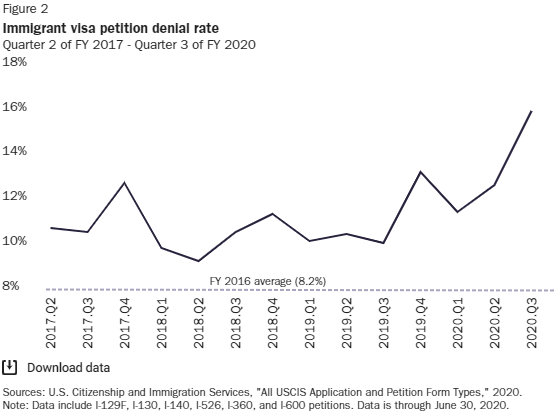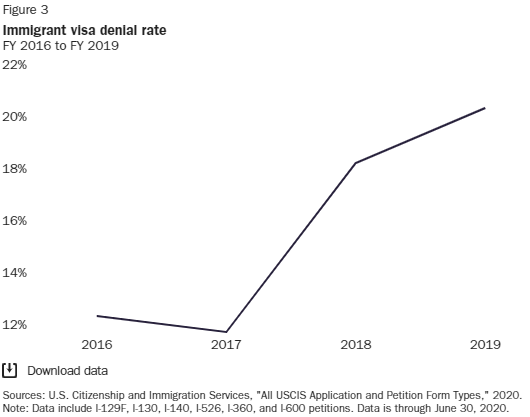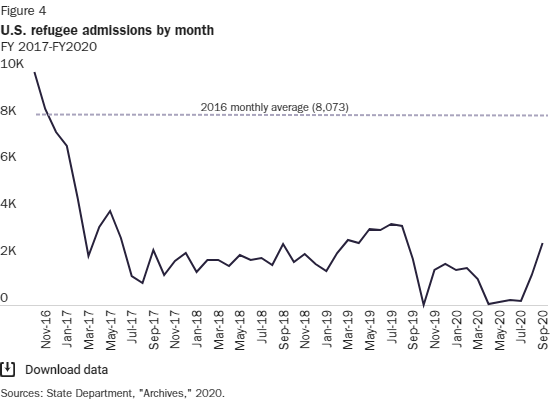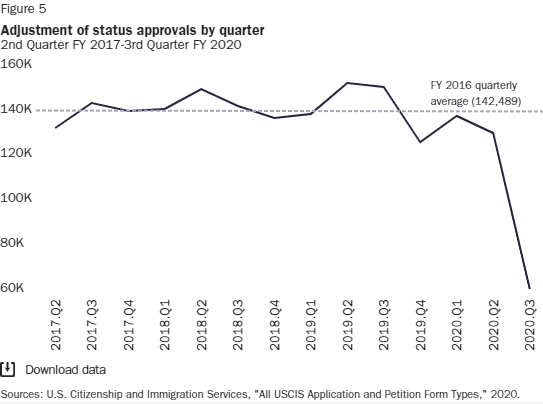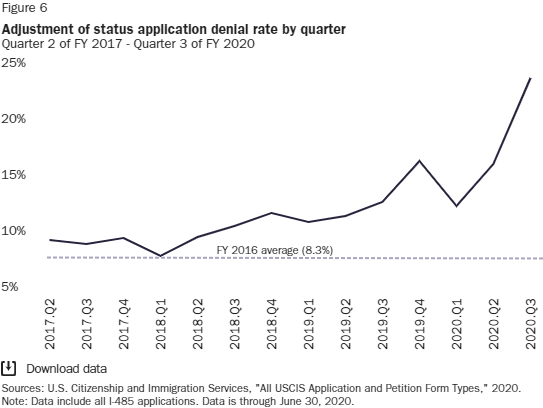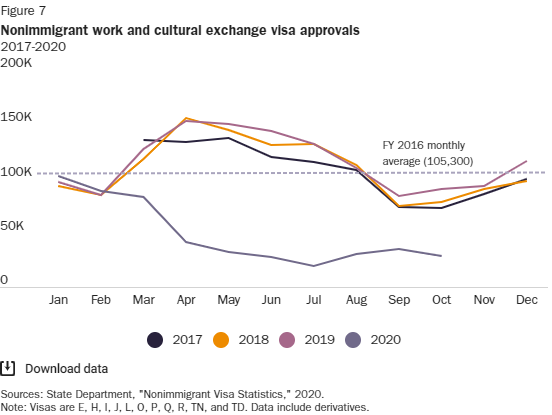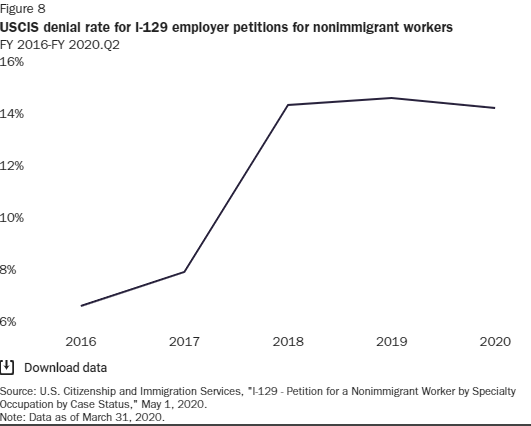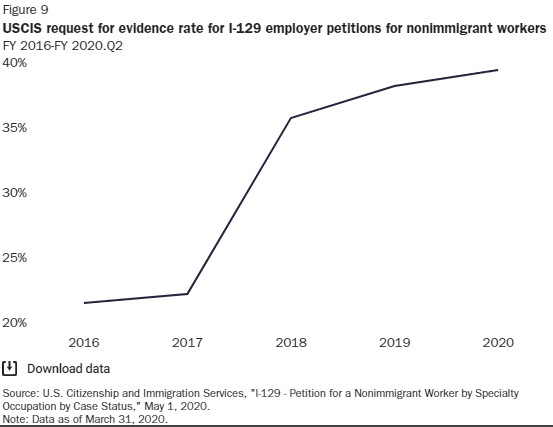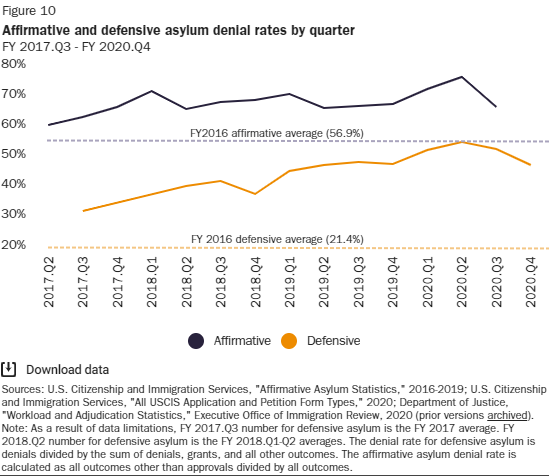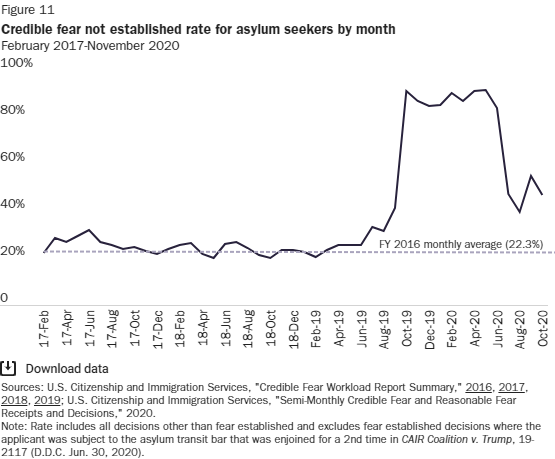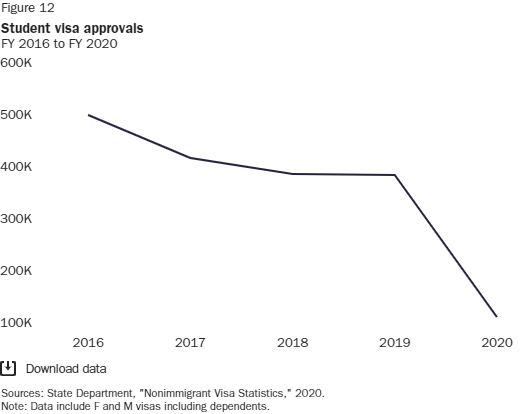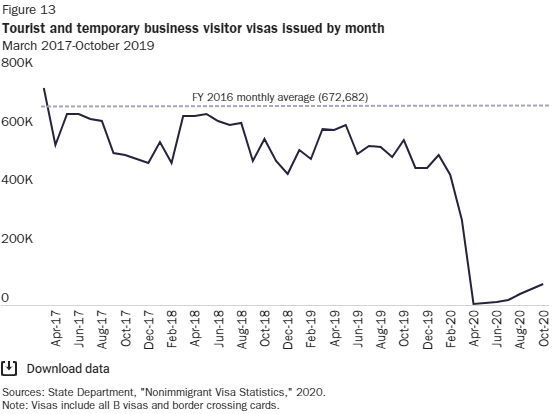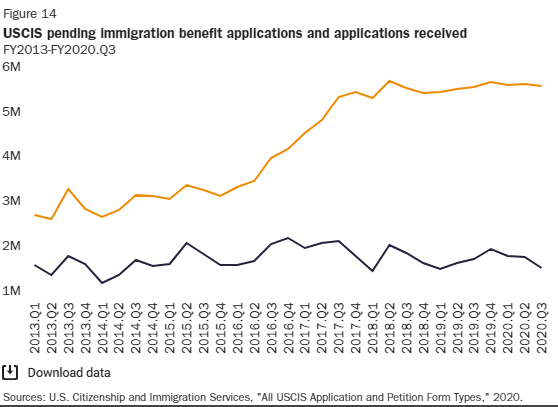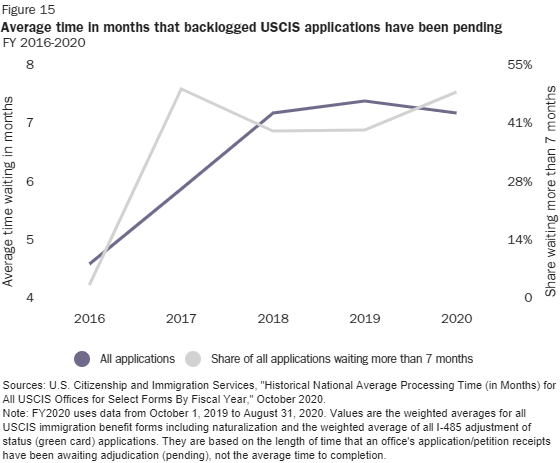Here is my attempt visualize the harm President Trump has caused not in terms of policies, but in terms of people, immigrants not coming to America, not receiving permanent residence, or being denied employment authorization and status. https://www.cato.org/blog/visualizing-4-year-assault-legal-immigration-trends-biden-must-reverse-0
Immigrant visa issuances were down 83 percent in October 2020 compared to FY 2016. Even before the pandemic, permanent immigration from abroad had declined by about 24 percent.
One reason for fewer issuances: USCIS started denying petitions for immigrant visas at a much higher rate. The denial rate basically doubled from about 8 percent in FY 2016 to 16 percent in the third quarter of FY 2020.
Even after a petition is approved, immigrants can be denied visas abroad by consular officers. The State Department has not provided any data for visa denials in FY 2020, but even by FY 2019, the denial rate had again almost doubled from 13 percent to 21 percent.
The number of refugee admissions had fallen by 67.5 percent compared to average for 2016. At the end of four years, the United States will have admitted about 291,393 fewer refugees than would have come had the admissions stayed at 2016 levels.
Now for immigrants adjusting to permanent residence inside the United States: the number of approvals is down by 56.2 percent compared to the average in FY 2016.
Despite approvals not falling until the pandemic, the adjustment of status denial rate has been higher in every quarter of the Trump administration than the average in FY 2016. The denial rate has increased almost threefold during the last four years.
On work and cultural exchange visas: there would have been 287,003 more issued during the Trump presidency if the FY 2016 visa issuance rate continued.
Again, while it took the pandemic to cause the major drop in work visas, this was the result of more demand for labor, not more favorable work visa policies. The denial rate for petitions for nonimmigrant workers by USCIS more than doubled
These denials reflect a concerted effort by USCIS to make hiring foreign workers much more difficult. USCIS has also nearly doubled the rate at which issues “requests for evidence” in response to employers’ petitions. USCIS commonly issues RFEs for info already provided
Denials for asylum also increased under Trump. The defensive denial rate has more than doubled the average for FY 2016, and the affirmative denial rate has grown significantly as well
Those final denials do not account for the incredible (pre-pandemic) surge in denials of credible fear, denying applicants the opportunity to even apply for asylum. Litigation has partly brought the rate back down.
Student visas: The number of international students on F or M visas crashed 75.5 percent from FY 2016 to FY 2020. Again, even before the pandemic, approvals were crashing.
The same was true for tourist visas. Visa issuances were below the FY 2016 average in all but 1 month of the Trump presidency. Nearly 9.1 million fewer tourist and business traveler visas were issued during Trump’s four years as a result.
Beyond denials and fewer approvals stands an almost unfathomable backlog of 5.7 million applicants for immigration benefits. In 2017, the backlog spiraled out of control. In the third quarter of 2020, the backlog was 3.5 times the number of new applications.
The massive backlog has naturally caused a huge increase in the wait times for applicants. The wait times have grown from 4.7 to 7.3 months from FY 2016 to FY 2020—with the share waiting more than 7 months shooting up from 4.7 percent in FY 2016 to 50.2 percent in FY 2020.
Note this is the average of all pending applications, not the the average time to actually have an application approved, which is much longer. It also refers to pending applications, not people waiting for the chance to apply due to low green card caps. Those waits are years

 Read on Twitter
Read on Twitter
